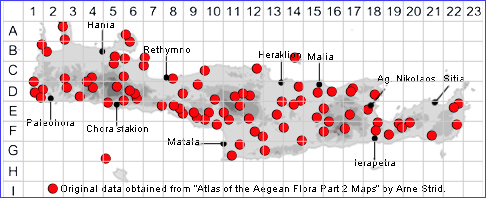SPECIES DESCRIPTION
CROCUS LAEVIGATUS
Family and Genus:- See- IRIDACEAE
Common Names:- None
Homotypic Synonyms:- None
Meaning:- Crocus (Gr) Thread, (reference to the stigmas of Crocus sativus).
Laevigatus (L) Polished, smooth, not rough.
General description:- Bulbous plants, stem very short, below ground.
Corm:-
1) Ovoid, 8-15 mm in diam.. tunics coriaceous, smooth, rather dark brown, splitting
at the base into triangular teeth or fibres.
Leaves:-
1) 3-4(-6), present at anthesis, 1-2.5 mm wide, dark green with a conspicuous white
middle stripe.
Flowers:-
1) White or lilac, often purple-striped externally; throat yellow, glabrous.
2) Bract, and bracteole subequal, membranous, white, sometimes green at the
apex, well-exserted from the scale-like cataphylls.
3) Perianth-tube, 2-8 cm, white, often yellowish or purplish at the apex; segments
1·3-3 x 0·4-1·8 cm, obovate, oblanceolate or elliptical, obtuse.
4) Filaments, yellow, usually glabrous or papillose at the base.
5) Anthers, creamy-white.
6) Style, yellow to deep orange, equalling or exceeding the stamens, dissected into
many slender branches.
Fruit:-
1) Capsule, 1-1·3 cm, ellipsoid;
2) Seeds, subglobose, reddish-brown; strophiole indistinct.
Key features:-
1) Corm-tunic, tough and coriaceous, with no obvious basal rings but splitting into
triangular teeth.
2) Anthers, and pollen white (discolouring with age).
3) Filaments, glabrous, or papillose only at the base.
4) Stigma, yellow to reddish orange, usually divided into 3 or more distinct
branches.
5) Bract and bracteole present, equal or subequal in length and width.
Habitat:- Open stony and rocky habitats, sparse scrub, rock crevices, occasionally
in open pine woodland.0-1100(-1900) m.
Distribution:- Endemic Crete, Evvia, Attika, Peloponnisos & Kyklades. Widespread
across Crete.
Flowering time:- Oct-Feb.
Photos by:- Steve Lenton

